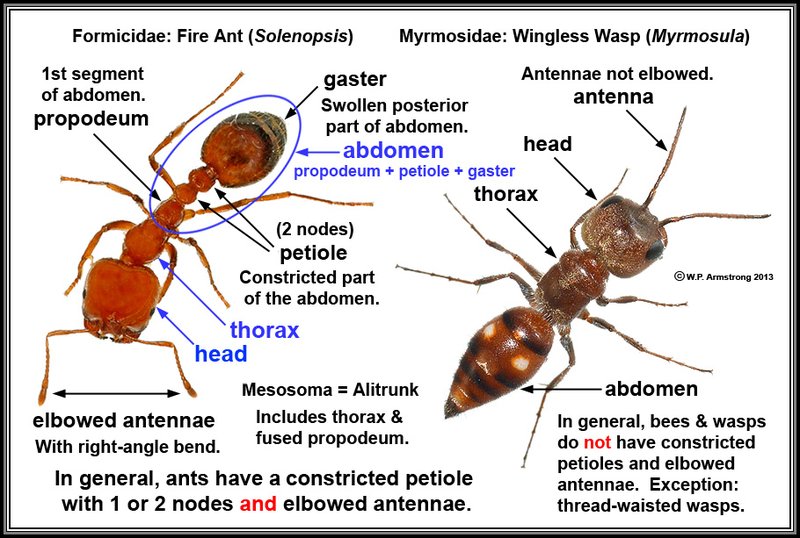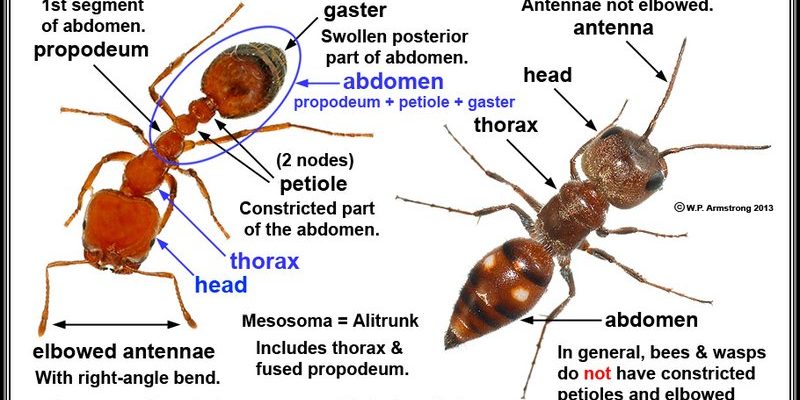
Understanding these differences isn’t just for the curious mind—it’s essential for anyone interested in nature, ecology, or even pest control. Watching ants can be like stepping into a tiny reality show, with drama, teamwork, and even a bit of rivalry. In this article, we’ll explore ants and compare them to some of their close relatives to help you appreciate these small but mighty insects better.
What Makes Ants Unique?
Ants belong to the family Formicidae, and there are over 12,000 species around the world! One of the most striking features of ants is their social structure. They live in colonies, which can range from a few dozen to millions of individuals. Each ant plays a specific role—workers gather food, soldiers protect the nest, and queens reproduce. This division of labor is a hallmark of their success.
Ants communicate using pheromones, which are like chemical messages sent through the air. When a worker ant finds food, she releases a trail pheromone that leads others to the source. This teamwork not only enhances their foraging efficiency but also highlights their intelligence. Honestly, it’s like watching a well-rehearsed dance, where everyone knows their steps.
What you might find surprising is that ants can actually farm! Some species tend aphids, protecting them from predators in exchange for the sweet substance they produce, known as honeydew. This relationship is a perfect example of mutualism, where both parties benefit, showcasing how ants adapt and survive in their environment.
Termites: The Ants’ Lookalikes
Now, let’s talk about termites. At first glance, they might seem like ants with their similar body shapes and social structures. However, they belong to a different order called Isoptera. One key difference? Termites primarily eat wood, while ants are more omnivorous, munching on everything from seeds to proteins.
Termites also have a unique digestive process. They rely on symbiotic microbes that help break down cellulose, the main component of wood. Without these tiny helpers, termites would struggle to get nutrients from their diet. This partnership is a fascinating adaptation, allowing them to thrive in habitats where food might be scarce for other insects.
Hierarchical structure is another similarity, but termites take it up a notch. They have a more complex caste system, with king and queen termites reigning supreme. The queen can lay thousands of eggs daily, ensuring a booming population. It’s a bit like running an insect empire, but without the drama of ant warfare.
Bees: The Pollinators Next Door
Bees offer another interesting comparison. Like ants, bees are also social insects that live in colonies. However, their primary focus is on pollination and making honey. Ants can be found on a variety of food chains, feeding on everything, including other insects, while bees mostly feed on nectar and pollen.
The communication methods of bees are quite different, too. They perform a “waggle dance” to inform fellow bees about food sources. The dance conveys information about distance and direction, showcasing their remarkable ability to communicate complex ideas. In this dance-off, ants stick to pheromones, while bees bring in a little choreography.
Despite their differences, both ants and bees play crucial roles in ecosystems. While ants contribute to soil health and seed dispersal, bees are essential for pollination. Without them, many plants—and the animals that depend on those plants—would struggle to survive. It’s a delicate balance in nature, and these insects help keep it in check.
Wasps: The Predators Among Us
If we look at wasps, we find another fascinating comparison. Wasps, like ants, are social insects, but they tend to be more aggressive and predatory. Many species are known for their painful stings, which they use to defend their nests or hunt for food. Unlike ants, who can be a bit more laid-back about confrontation, wasps are ready to defend their territory.
One key distinction is their diet. While ants are mostly scavengers, wasps are more predatory, hunting other insects to feed their larvae. This hunting behavior means that wasps are natural pest controllers, keeping populations of harmful bugs in check. In this sense, they serve a vital role in maintaining ecological balance, just like ants.
Interestingly, wasps also exhibit some social behaviors. Their colonies can reach impressive sizes, and they build nests from paper-like material made from chewed wood fibers. This leads to the creation of some intricate and impressive structures. So, while they serve different ecological roles, both ants and wasps showcase the wonder of nature’s adaptations.
Comparing Social Structures
When it comes to social structures, ants and their relatives exhibit a variety of arrangements. Ants have a clear division of labor, while termites have a complex caste system, as previously mentioned. Bees have a queen and workers, but their roles are primarily focused on reproduction and foraging. Wasps, on the other hand, can be social or solitary, depending on the species.
Understanding these social dynamics can be fascinating. Each insect has adapted to its environment in ways that maximize survival and efficiency. For example, the cooperative behaviors of ants allow them to thrive in diverse habitats, while the aggressive nature of wasps helps control pest populations.
While they may seem very different at first glance, these insect families share core similarities and unique adaptations. It’s all about how each has evolved to navigate their specific roles in the ecosystem.
Ecological Impact and Importance
Ants, termites, bees, and wasps each play a significant role in their ecosystems, and their importance cannot be overstated. Ants are often referred to as “nature’s recyclers” because they break down organic material, aerate the soil, and help with decomposition. Their activities enhance soil quality and promote plant growth.
Termites also have a major impact on ecosystems. Their tunneling helps to aerate soil, improving water infiltration and nutrient cycling. While sometimes viewed as pests by homeowners, they are essential for breaking down cellulose and recycling nutrients back into the ecosystem.
Then we have bees, which are vital for pollination. They help fertilize plants, enabling the production of fruits, vegetables, and nuts. Without bees, many of our food sources would dwindle, impacting not just wildlife, but human food systems as well.
Lastly, wasps, although often misunderstood, contribute to natural pest control. By feeding on other insects, they help keep populations in check and maintain balance in nature. So, the next time you see an ant or a wasp buzzing around, remember that they’re doing important work.
In comparing ants to similar insects like termites, bees, and wasps, we can see just how rich and diverse the insect world really is. Each of these insects has carved out its niche in the ecosystem, contributing in unique ways to balance and sustainability. Whether they’re working together in a colony, hunting for food, or pollinating plants, their behaviors and roles are intricate and essential.
Next time you observe ants on your picnic blanket or bees buzzing around your garden, take a moment to appreciate the complexity of their lives. They are much more than mere pests; they are key players in the story of our planet. So, here’s to ants and their fascinating relatives—tiny but mighty, and truly deserving of our admiration!

